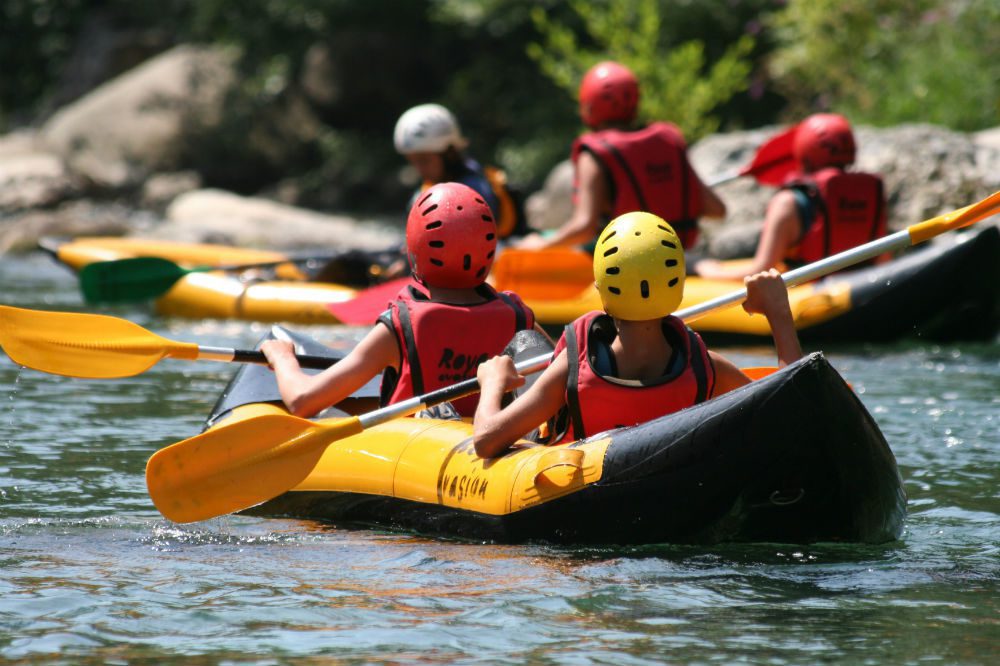
Are you looking for ways to enjoy your weekend away from the hustle and bustle of your work life? Then we would definitely recommend you get onto a kayak and sail away! But wait, you first need to learn how to paddle a kayak, don't you?
To be honest, the best thing about kayaking is perhaps the fact that you do not really have to learn it. Anyone can hop on and just start paddling. However, specific techniques can get the job done better. In this article, we will learn about how it is done the right way.
Contents
How to Paddle a Kayak?
Paddling a kayak is all you have to know to use one. It’s really simple once you get the hang of it. However, it is crucial that you learn a few techniques first. This does not only make your experience worthy, but it also makes sure that you are safe in the water.
Poor paddling skills will not give you the real taste of kayaking, after all. In addition to that, it will also tire you out instead of making your weekend relaxing. There are a couple of things that we will discuss ahead in this article that will take your paddling abilities to the next level.
How Posture Affects Your Experience
As we mentioned earlier, if you lack the skills for paddling, there is a high possibility that the venture will exhaust you faster. One of the primary reasons is terrible posture. Learning a forward stroke is easy, but in order to enhance your performance, you have to ensure that your paddling position is proper.
Make sure that you get a kayak that has a comfortable seat along with enough leg space. Many kayaks have reclining seats, but this is not preferable for active kayaking.
You have to keep your back straight, relax your shoulders, and your legs set against the foot pegs with your feet aligned. These steps will help you to paddle faster and harder. It also helps to eliminate issues like back pain, leg pain, and more.
Pro Tip: Keeping your legs together will aid in better torso rotation; hence, increasing efficiency. After all, they have to do the maximum amount of work. Even your shoulders and arms will be involved in using the paddles.
However, you will notice that even they will transmit the force down to your back and legs. Therefore, do not lean back and make sure your feet rest well against the foot pegs.
Paddle Handling Techniques
Before using a paddle, it is essential to pick a paddle that is:
- The correct length
- Suits your dominant hand
- Feathered or un-feathered
- With the right type of blades
The next step is to make sure the alignment of the blades is appropriate. Now comes the main part of handling the paddles. You have to take care of where you hold the shaft from. The gripping power and technique are crucial to yield the best stroke response.
For this, first, rest the midpoint of the shaft on your head. Next, you have to make proper adjustments to hold the paddle so that your elbows form a 90-degree angle. You can cross check if you are holding the paddle properly by a simple method, which is called the paddler’s box.
This means that when you bring the paddle down, the shaft with your arms and chest should make a box-like shape. Throughout your entire journey, make sure that you maintain a paddler’s box. This helps to improve your torso rotation.
Once you place the blade in the water, try to pull yourself up and past the paddle. Moreover, remember to twist the paddle when you have to move from one stroke to the next.
Pro Tip: Provide maximum movement to the paddle through your torso, and keep your arms strictly straight throughout. Do not use your arm strength to rotate the paddles. This is the key principle to learn how to paddle a kayak.

Different Types of Strokes
There are a few strokes that you can practice to achieve the most professional kayaking journey. These are:
Forward Stroke
We will start with this stroke as this is by far the most important stroke when talking about kayaking. This type of stroke primarily involves your torso and core muscles. Arm muscles will also accompany the torso’s strength. You will be using this stroke the most throughout your kayaking trip.
Before starting, make sure you are holding the paddles correctly. To repeat the stroke, the blade, which is out of the water, should be immersed next to your feet.
This stroke includes three phases:
- The catching phase
- The powering phase
- The releasing phase
The blades should be immersed in the water fully at all times. This will bring out the stroke in the best way. The orientation of the blades should be almost vertical as well. These techniques help you keep your trail smooth and straight.
Reverse Stroke
If you want to put brakes while moving your kayak, you can make use of the reverse stroke. It works in the opposite manner as compared to the forward stroke. To obtain the maximum output of this stroke, check again to see if you are maintaining the paddler’s box.
The reverse stroke contains three phases:
- The dropping phase
- The powering phase
- The releasing phase
To repeat the stroke, the blade, which is out of the water, should be immersed on the opposite side, next to your hip.

Sweep Stroke
This stroke turns your boat around. You will notice that if you keep on repeating the forward stroke, after some time, your kayak will start turning to the other side. Therefore, making use of the sweep stroke here helps to set sail again efficiently.
This stroke includes three phases:
- The catching phase
- The turning phase
- The releasing phase
A key point to look out for is to make sure that your sweep stroke movement is wide. This will ensure the boat turns with very minimal loss of momentum.
Draw Stroke
Until now we talked about strokes that will paddle your kayak forward and backward, turn it around, and also stop it. Now, we will talk about a stroke that is, although used less, is nonetheless important—the draw stroke.
The draw stroke moves your kayak sideways. To paddle kayak towards the dock or near another boat, we make use of this stroke. If you want to repeat this stroke, several draw strokes have to be combined and performed repeatedly.
To paddle your kayak sideways, you have to go through the following steps:
- Align your paddle blades to make them horizontal.
- On the side of your boat, touch the water with the tip of your blade.
- Keep the tip of the blade dipped in water. After this, use your hand placed lower on the shaft to pull the blade towards you.
- Make sure that the movement is quick but also precise. This is important so that you do not hit the boat with the paddle.
Conclusion
We have given you a guide on paddling your kayak in the best manner. You can try out these techniques to make your experience better since kayaking is an enjoyable yet easy activity. These tips will surely improve the quality of your venture. Happy kayaking!
